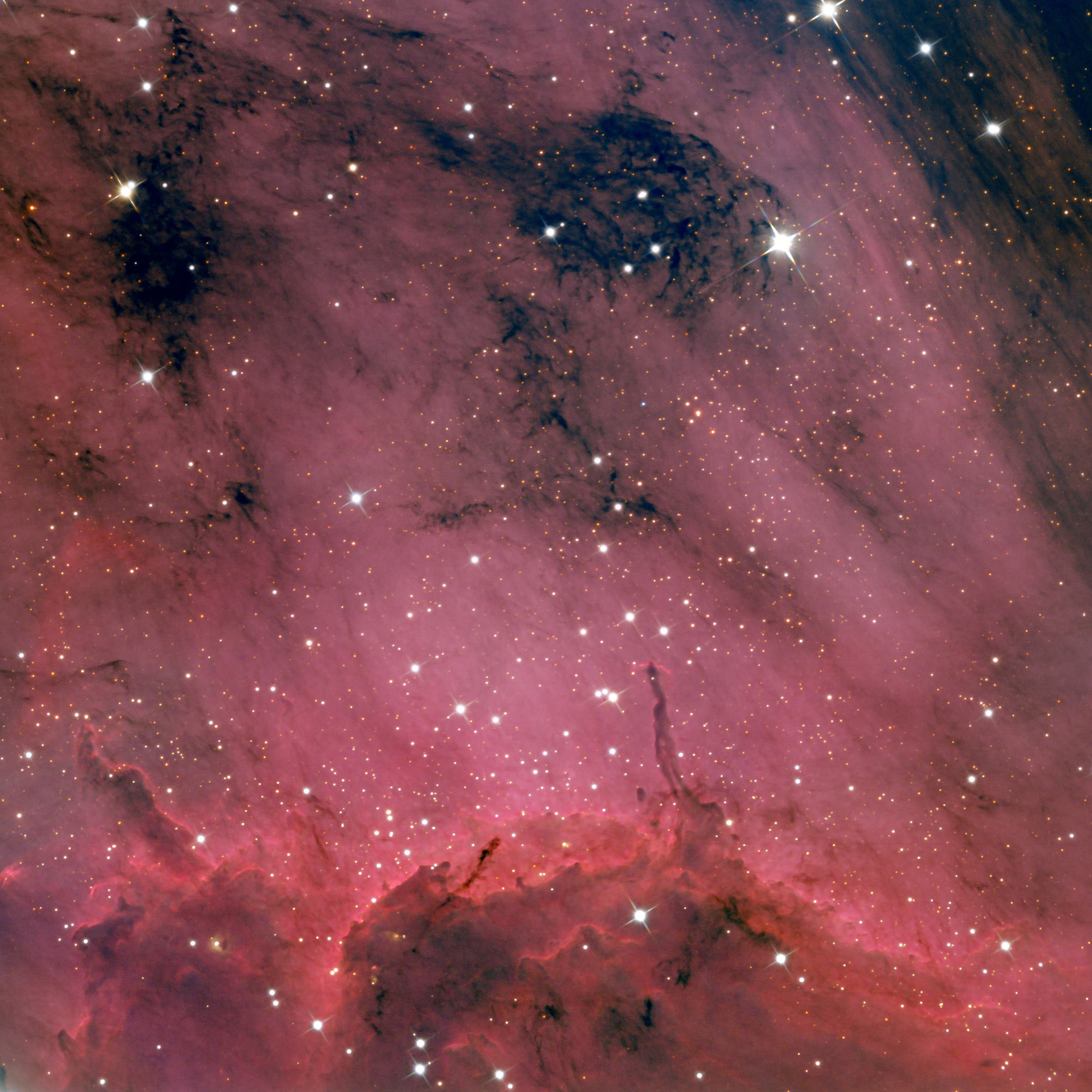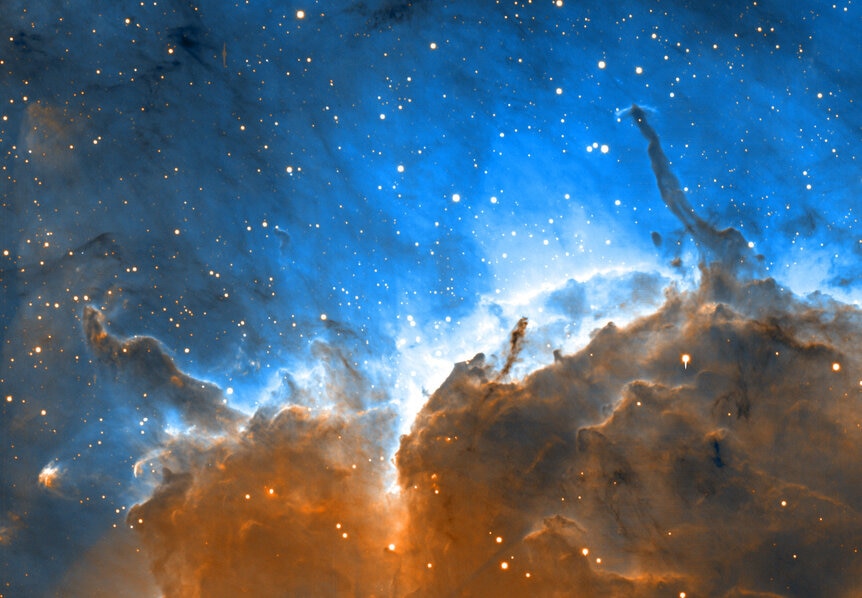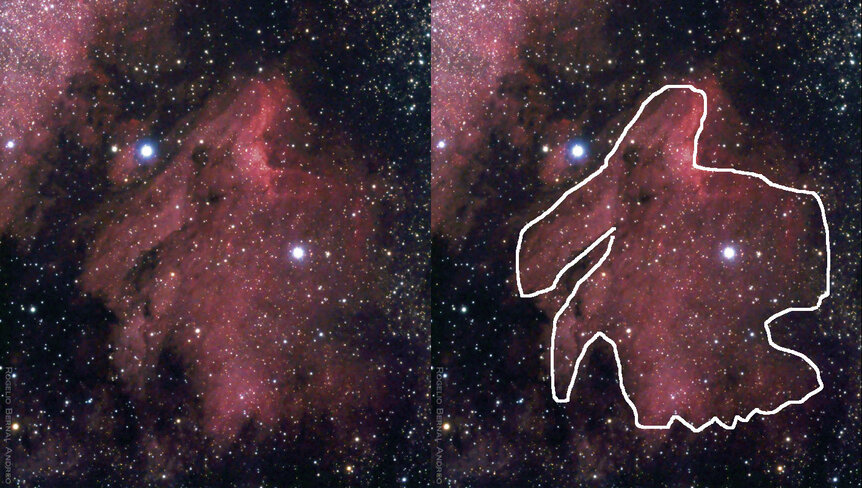Create a free profile to get unlimited access to exclusive videos, sweepstakes, and more!
A Pelican births a star with an elephant trunk. No, seriously.

My friend Adam Block is an astronomer and astrophotographer at the University of Arizona Mt. Lemmon SkyCenter northeast of Tucson. The skies there are dark, and he commands the Schulman 0.81-meter telescope to probe the skies so he can capture it in monumentally gorgeous images.
I'm always happy when I get an email from him because it means a new image to gawk at. When he sent me one with the link to IC 5070, though, I was momentarily taken aback. What object was that?
Then I saw the picture and realized, ah, the Pelican Nebula! I've seen this myself with a small 'scope and it's funny how much it really does look like a Pelican. But with the 0.81-meter, he has significantly better resolution, and when he sees it it looks like this:
Cooooool. I know this doesn't look like a pelican, but you're only seeing a small piece of it here (I have a wider view below). The Pelican Nebula is about 2,000 light years away or so, easily found in the constellation of Cygnus even with binoculars. It's an interesting object; the most obvious aspect of it is that it's a star-forming gas cloud, with massive stars pummeling the gas around them with ultraviolet light, and the hydrogen responding by glowing characteristically red.
But it's also part of a large molecular cloud: A cold, dense soup of gas and dust that does not glow in visible light, so it can't seen… except in silhouette. At the bottom of the image you can see eerie rolling folds, like lumps of something under a sheet. That's the edge of the molecular cloud, where the thin gas stops and much thicker material takes over. The young, massive, hot, and luminous stars being born in the Pelican slam the molecular cloud with gas and fierce winds of particles as well, eroding it away in a process called photoevaporation, forming those sharp illuminated edges to the darker hummocks.
Stars form in particularly dense knots in the cloud. Some of these knots are so dense they can resist the pummeling from the nascent stellar behemoths, at least for a time. The material around them blows away, leaving long finger-like structures colloquially called "elephant trunks" by astronomers — they're analogous to sandbars in flowing water. Generally, stars form at the tips of the trunks.
You can see one of these just below center and to the right in Adam's image. I gaped at it when I saw it; it's phenomenally long and thin. And then I squinted as I looked at the tip; is that a curved arc of brighter hydrogen gas there?
Yup. I had to chuckle; that was proof positive of a young star at the trunk's tip. Here's a closer view from the NOAO 4-meter Mayall telescope:
[Note: Different filters were used for the images, which is why the colors don't match. Adam took the unusual route of using "natural light" filters (red, green, and blue) to make his image instead of narrower filters that select out very specific nebula colors as is usually done.]
See it there, on the right? The star forming itself in the tip is buried in dust and gas, and isn't visible, but its effects are. Young stars form from a disk of material and rotate very rapidly. They also have strong magnetic fields. The fields coil up like vortices, and can take material from the disk and launch it into space in opposite directions. Astronomers call these jets generically, and in this case of a young star we called them Herbig-Haro objects. This one is called HH 555. You see them all over the place inside star-forming nebulae.
So why is this one curved? I found a paper that modeled the jets, and the scientist determined that they are being blown back, either from the expansion of the nebula itself (the gas is hotter than the molecular cloud, so it expands) or from the stellar wind of particles being blown off by a nearby massive star above it.
That was another reason I chuckled when I saw the HH object. Sometimes these jets are curved like propellers due to the star's rotation wobbling over time, but this one was obviously being shaped by a wind of some kind. It's nice to see my first impressions confirmed.
And this reminds me: The Pelican is located in the constellation of Cygnus (another sky bird), which is up in the summer. Things are warming up around here, and this image is an invitation to take a look myself when the stars align in a few months. I do like to remember that the gorgeous objects I describe here actually exist, and many can be seen without too much trouble.
The occasional reminder of being connected to the sky is always a welcome one.

















